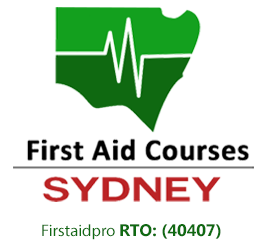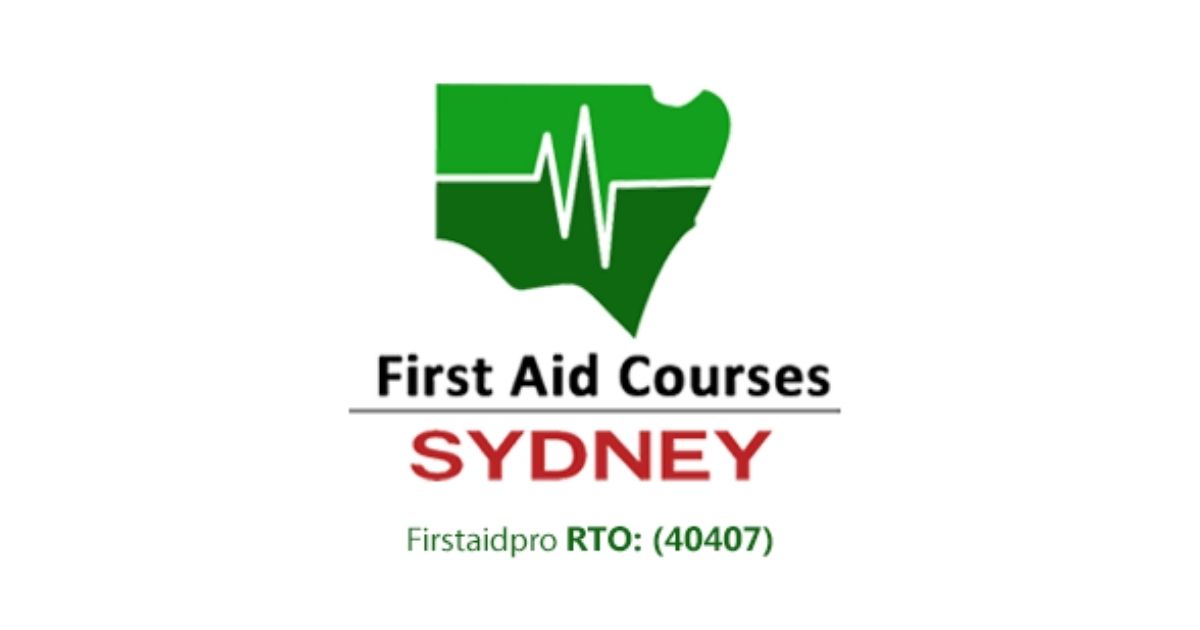- Course Name
HLTAID001 – Provide cardiopulmonary resuscitation (Online + 1 Hour)
Superseded by HLTAID009 – Provide cardiopulmonary resuscitation
- Course Code IncludedHLTAID001
Course Cost
$39 (may vary)
Course Duration
1 Hour – Skills Practice & Assessment
Is the course accredited?
Yes
Does the course meet workplace requirements?
Yes
Available Discounts
Group Booking Discounts Available
Previously Known asProvide CPRProvide cardiopulmonary resuscitationPerform CPRCPR refresherCPR update courseHLTCPR211A
HLTAID001 – Provide cardiopulmonary resuscitation (Online + 1 Hour)
(Superseded by HLTAID009 Provide cardiopulmonary resuscitation)
Covid-19 Precautions
At First Aid Pro your health and safety is our priority. Infection control measures and COVID-19 practices are applied across all of our training facilities. Please remember if you are unwell or experiencing any symptoms, we ask that you contact us to reschedule your training. For further information please email courses@firstaidpro.com.au
Course Requirements
- Participants must be 14 years of age (those who are under 18 must present enrolment form from a parent or guardian to accept responsibility)
- Participants must have Language, Literacy, and Numeracy (LLN) skills to effectively produce a written report and conduct a verbal report, calculate CPR compression rates and breaths, read and interpret instruction signs such as a defibrillator (AED).
- Perform at least 2 minutes of uninterrupted single rescuer CPR (5 cycles of both compression and breaths) on an adult manikin placed on the floor
- Perform at least 2 minutes of interrupted single rescuer CPR (5 cycles of both compression) on an infant manikin placed on the firm surface
Course Structure:
Online Training and Assessment
The online course features clear, easy to understand with up to date information. The time required to complete the online varies based on learners existing knowledge, skills, and experience. (1.5 to 2.5hrs)
Face-to-Face (1 Hour)
The Practical Skills and Assessment Workshop give you the opportunity to learn, practice, receive feedback and complete required skills assessment. To confirm understanding of online work a short quiz will be completed in the practical workshop.
Course Times
Our CPR Practical Skills and Assessment Workshop run in the Adelaide CBD every day of the week from 9am to 10am or 3pm to 4pm and some evenings. Course times may vary, check course calendar HERE
Course Costs
- $45
- Price beat Guarantee 10% Off (T&C)
Course Content
First Aid & Certificate Issued Same Day
No Hidden Costs | Fully Accredited | Same Day Certificates (T&C)
Upon successful completion of the training course you will be issued electronically
Statement of Attainment
HLTAID001 Provide cardiopulmonary resuscitation
- Additionally, hard copies HLTAID001 Provide cardiopulmonary resuscitation can be purchased for a fee of $12 including postage.
- As recommended by the Australian Resuscitation Council and Safe Work, the certification is valid for 12 months and will need to be updated annually for you to keep your certification current.
Practical Skills and Assessment Workshop Include:
The participant will show the ability to complete tasks outlined in the criteria of this unit, manage tasks and manage contingencies in the context of the job role.
Practice and assessment will be completed in line with state/territory regulations, first aid codes of practice, Australian Resuscitation Council (ARC) guidelines and workplace procedures:
Followed DRSABCD in line with ARC guidelines, including:
- performed at least 2 minutes of uninterrupted single rescuer cardiopulmonary resuscitation (CPR) (5 cycles of both compressions and ventilations) on an adult resuscitation manikin placed on the floor
- performed at least 2 minutes of uninterrupted single rescuer CPR (5 cycles both compressions and ventilations) on an infant resuscitation manikin placed on a firm surface
- responded appropriately in the event of regurgitation or vomiting
- managed the unconscious breathing casualty
- followed single rescue procedure, including the demonstration of a rotation of operators with minimal interruptions to compressions
- followed the prompts of an automated external defibrillator (AED)
- Responded to at least one simulated first aid scenario contextualised to the candidate’s workplace/community setting, including:
- demonstrated safe manual handling techniques
- provided an accurate verbal or written report of the incident
(Online Theory) Includes:
The participant will demonstrate through the successful completion of the online theory, essential knowledge required to effectively complete tasks outlined in the criteria of this unit, manage tasks and manage contingencies in the context of the work role. This includes knowledge of:
State/Territory regulations, first aid codes of practice and workplace procedures including:
- ARC Guidelines relevant to the provision of CPR
- safe work practices to minimise risks and potential hazards
- infection control principles and procedures, including use of standard precautions
- requirements for currency of skill and knowledge
- Legal, workplace and community considerations, including:
- awareness of potential need for stress-management techniques and available support following an emergency situation
- duty of care requirements
- respectful behaviour towards a casualty
- own skills and limitations
- consent
- privacy and confidentiality requirements
- importance of debriefing
- Considerations when providing CPR, including:
- airway obstruction due to body position
- appropriate duration and cessation of CPR
- appropriate use of an AED
- chain of survival
- standard precautions
- Basic anatomy and physiology relating to:
- how to recognise a person is not breathing normally
- chest
- response/consciousness
- upper airway and effect of positional change
Followed DRSABCD in line with ARC guidelines, including:
- performed at least 2 minutes of uninterrupted single rescuer cardiopulmonary resuscitation (CPR) (5 cycles of both compressions and ventilations) on an adult resuscitation manikin placed on the floor
- performed at least 2 minutes of uninterrupted single rescuer CPR (5 cycles both compressions and ventilations) on an infant resuscitation manikin placed on a firm surface
- responded appropriately in the event of regurgitation or vomiting
- managed the unconscious breathing casualty
- followed single rescue procedure, including the demonstration of a rotation of operators with minimal interruptions to compressions
- followed the prompts of an Automated External Defibrillator (AED)
Respond to at least two simulated first aid scenarios contextualised to the candidate’s workplace/community setting, including:
- conducted a visual and verbal assessment of the casualty
- demonstrated safe manual handling techniques
- post-incident debrief and evaluation
- provided an accurate verbal or written report of the incident
Applied first aid procedures for the following:
- allergic reaction
- anaphylaxis
- bleeding control
- choking and airway obstruction
- envenomation, using pressure immobilisation
- fractures, sprains and strains, using arm slings, roller bandages or other appropriate immobilisation techniques
- respiratory distress, including asthma
- shock
Knowledge Evidence
(Online Theory & Practical Session)
The participant will demonstrate through the successful completion of the online theory, essential knowledge required to effectively complete tasks outlined in the criteria of this unit, manage tasks and manage contingencies in the context of the work role. This includes knowledge of:
State/Territory regulations, first aid codes of practice and workplace procedures including:
- ARC Guidelines relevant to provision of CPR and first aid
- safe work practices to minimise risks and potential hazards
- infection control principles and procedures, including use of standard precautions
- requirements for currency of skill and knowledge
legal, workplace and community considerations including:
- awareness of potential need for stress-management techniques and available support following an emergency situation
- duty of care requirements
- respectful behaviour towards a casualty
- own skills and limitations
- consent
- privacy and confidentiality requirements
- importance of debriefing
considerations when providing first aid including:
- airway obstruction due to body position
- appropriate duration and cessation of CPR
- appropriate use of an AED
- chain of survival
- standard precautions
- how to conduct a visual and verbal assessment of the casualty
principles and procedures for first aid management of the following scenarios:
- abdominal injuries
- allergic reaction
- anaphylaxis
- basic care of a wound
- bleeding control
- burns
- cardiac conditions, including chest pain
- choking and airway obstruction
- crush injuries
- diabetes
- dislocations
- drowning
- envenomation
- environmental impact, including hypothermia, hyperthermia, dehydration and heat stroke
- eye and ear injuries
- fractures
- febrile convulsions
- head, neck and spinal injuries
- minor skin injuries
- needle stick injuries
- poisoning and toxic substances
- respiratory distress, including asthma
- seizures, including epilepsy
- shock
- soft tissue injuries, including strains and, sprains
- stroke
- unconsciousness
basic anatomy and physiology relating to:
- how to recognise a person is not breathing normally
- chest
- response/consciousness
- upper airway and effect of positional change
considerations in provision of first aid for specified conditions
Your first aid certificate – Fully Accredited
Get your fully accredited first aid certificate on the same day.
After successfully completing your training with First Aid Course Sydney you will receive a fully Accredited Recognised Statement of Attainment for your first aid course.



